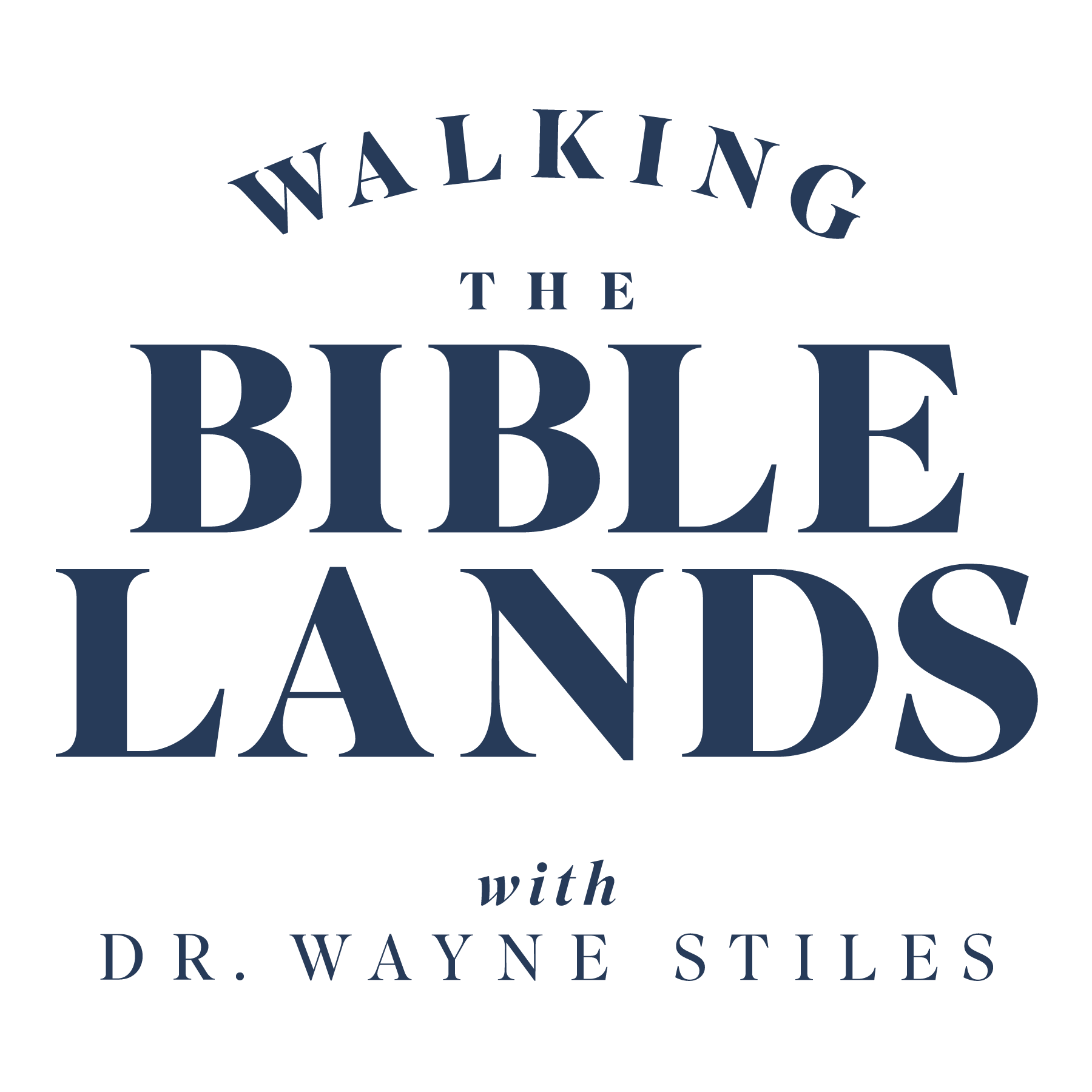3 min read
Crossing the Jordan River – Your Place of Transition
What Served As A Border Also Represents A Bridge To Your New Life
Admin
:
Jul 1, 2022 10:00:00 PM
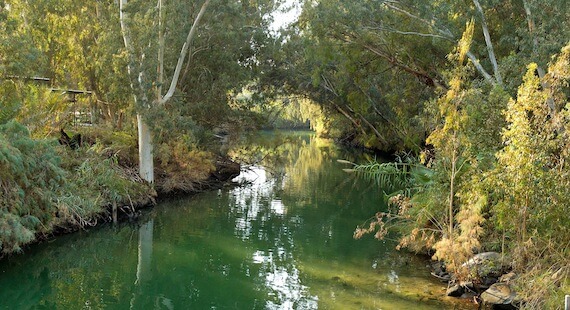
Other rivers have more beauty. Many are much longer. Most are far cleaner. But no river has garnered as much affection as the Jordan River. There’s a good reason.
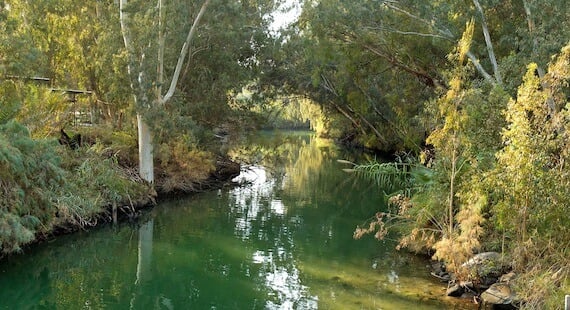
(Photo: The Jordan River, courtesy of the Pictorial Library of Bible Lands)
It wasn’t the beauty of the Jordan River that inspired centuries of psalms, hymns, and spiritual songs to include it in their verses. It was crossing the River Jordan — and what that meant.
The significance of the Jordan River began as a simple geographic barrier, which — practically speaking — represented a border (Joshua 22:18-25). In fact, the serpentine river still represents a border between Israel and the nation of Jordan.
But in the Bible, the Jordan River’s presence on Israel’s eastern edge stood as an enduring metaphor for transitions.
These transitions point directly to your life as well.
Joshua’s Transition at the Jordan River Began the Conquest
Crossing the Jordan River for Joshua meant entering the Promised Land and leaving the leadership of Moses. When the priests of God left the Jordan’s eastern banks and stepped into its current, the river stopped flowing upstream at a site known as Adam.
After the nation crossed, Joshua made a fundamental comparison:
For the LORD your God dried up the waters of the Jordan before you until you had crossed, just as the LORD your God had done to the Red Sea, which He dried up before us until we had crossed. —Joshua 4:23
Did you notice? Joshua connected their powerful redemption as a nation to the same power of God that helped them enter the Promised Land. They erected 12 stones from the Jordan River stones to commemorate the event.
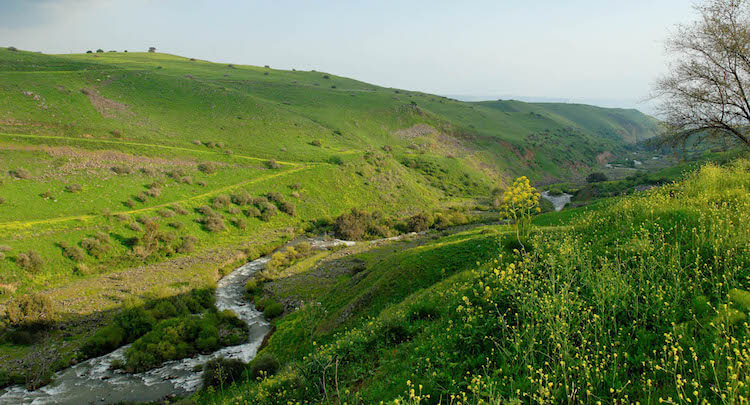
(Photo: The winding Jordan River north of Sea of Galilee. Courtesy of the Pictorial Library of Bible Lands)
Elisha’s Transition — Preparing for Exile
Another significant transition occurred in the same location on the Jordan.
Elijah transferred the prophetic mantel to Elisha just before Elijah ascended to heaven. And as it had done in the shift from Moses to Joshua, the Jordan River parted for Elijah and Elisha, who crossed on dry ground (2 Kings 2:8).
Jesus’ Transition Began the New Covenant
It’s no wonder John the Baptist chose this same area to baptize.
Because the Jordan River represented a place of transition — in fact, of new beginnings — it became the place where John baptized Jesus. But instead of the waters parting, the heavens did (Mark 1:10)!
Although there are proponents with different views, it seems most likely that John baptized Jesus across from Jericho, near Bethany Beyond the Jordan, in the same area of the previous significant transitions.
Recent improvements allow pilgrims to visit this significant area with permission from the Israel Defense Force.
A place for baptisms stands on both sides of the Jordan, but I wouldn’t recommend getting baptized here.
Most of the Jordan River’s flow above the Dead Sea has been diverted for agricultural use — with sewage replacing it. (Just compare the water in the picture above with the one below.)
A better place for baptisms lies just south of the Sea of Galilee at the Yardenit Baptism site. Just remember it’s not where Jesus got baptized.
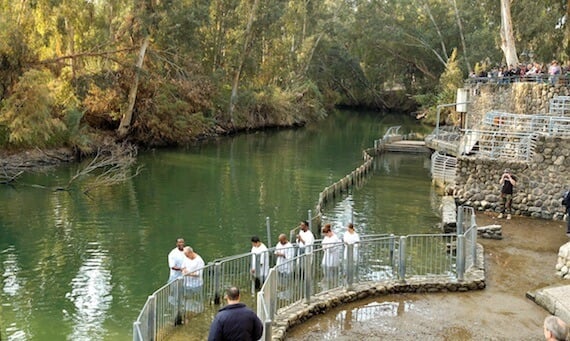
(Photo: The Jordan River Yardenit baptismal site, courtesy of the Pictorial Library of Bible Lands)
The Jordan River — A Place of Transition
The Jordan River remains an important symbol of transition.
The transitions that occurred there were sometimes national — as with Moses and Joshua, Elijah and Elisha, and John and Jesus.
But the area also had its personal transitions — even conversions — as in the cases of Rahab, Naaman, Zaccheus, and Bartimaeus.
Be they national or personal transitions — or both — any new beginning also requires an ending. It requires leaving one shore and crossing the river for another.
Your Transition from Death to Life
Entering the Promised Land by fording the Jordan remains a timeless metaphor for crossing over from death to spiritual life (see Hebrews 4:1-10).
As Joshua pointed out after crossing the Jordan, the same grace of God that redeemed them was the grace that led them home (Joshua 4:23).
The same is true of us.
SEE THE BIBLE COME TO LIFE
You can take a journey to the Jordan River without leaving your house. Take a journey with a virtual tour of the Bible Lands.
Tell me what you think: What is significant to you about the place where you were baptized? To leave a comment, just click here.
Click here to leave a comment.
-1.png?width=5230&height=1198&name=unnamed%20(4)-1.png)

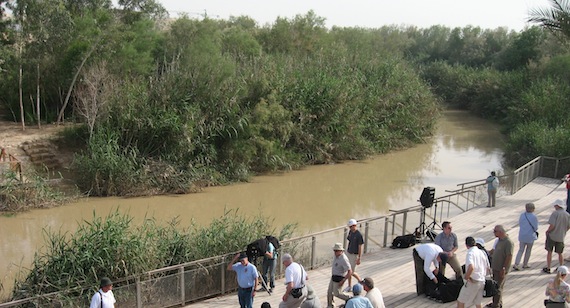

.jpg?width=350&name=Wayne-books-350wide%20(1).jpg)



